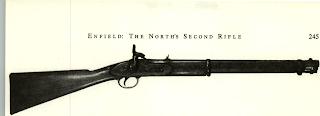Somewhat simpler is the complex of marks and
The 33-inch barrel does not have a bayonet stud;
a works in Birmingham and a shop in London for some
The Potts & Hunt gun number, probably of a lot of
All the locks appear fundamentally similar, but will
The stock maker of the Potts & Hunt gun stamped
from the breech (IVi inches on the Tower-Birmingham
On the right wing of the Potts & Hunt sight is a
the lock. This is evidently the mark of the final inspector in the Potts & Hunt shop.
The 33-inch barrel does not have a bayonet stud;
a works in Birmingham and a shop in London for some
The Potts & Hunt gun number, probably of a lot of
All the locks appear fundamentally similar, but will
The stock maker of the Potts & Hunt gun stamped
from the breech (IVi inches on the Tower-Birmingham
On the right wing of the Potts & Hunt sight is a
the lock. This is evidently the mark of the final inspector in the Potts & Hunt shop.




Comments
Post a Comment